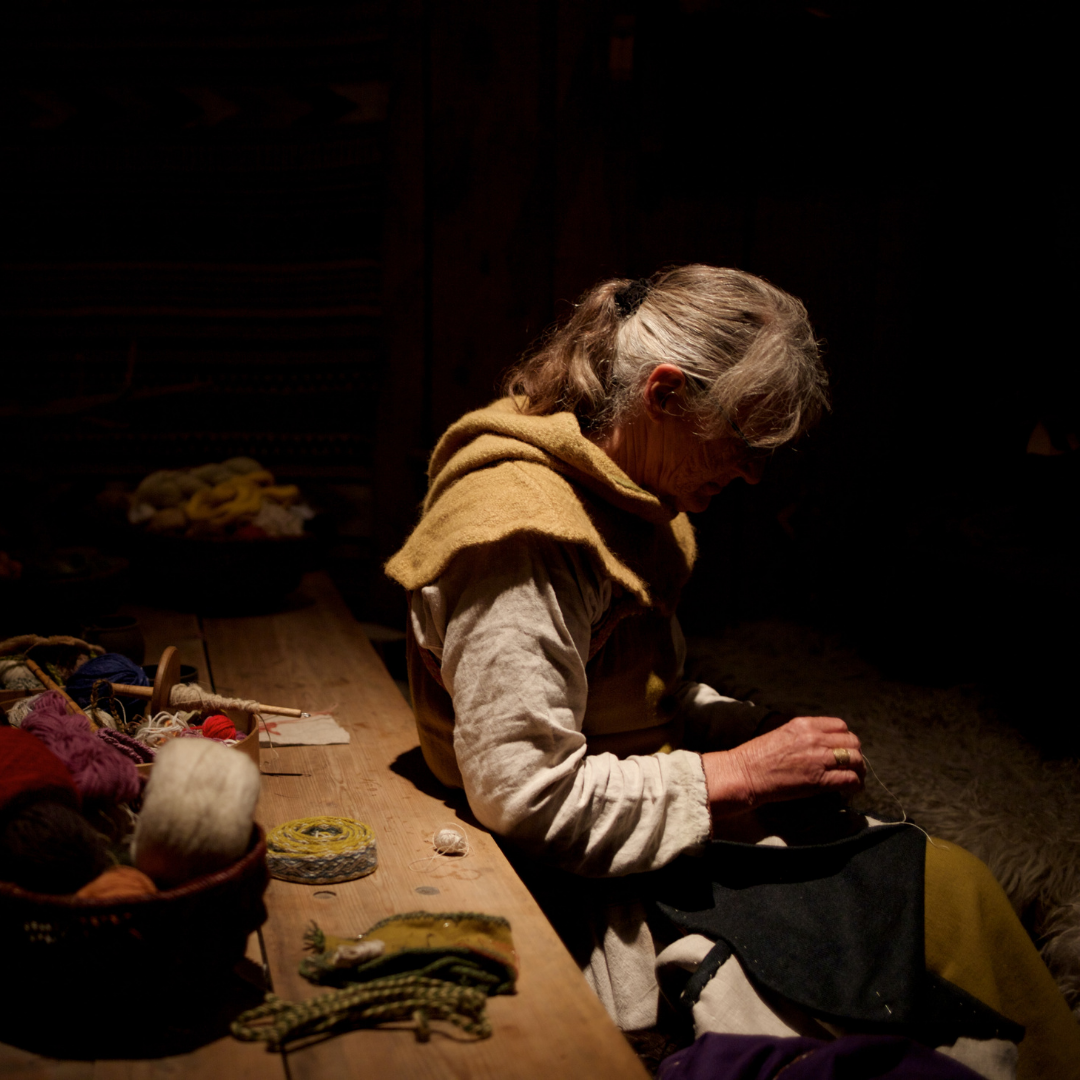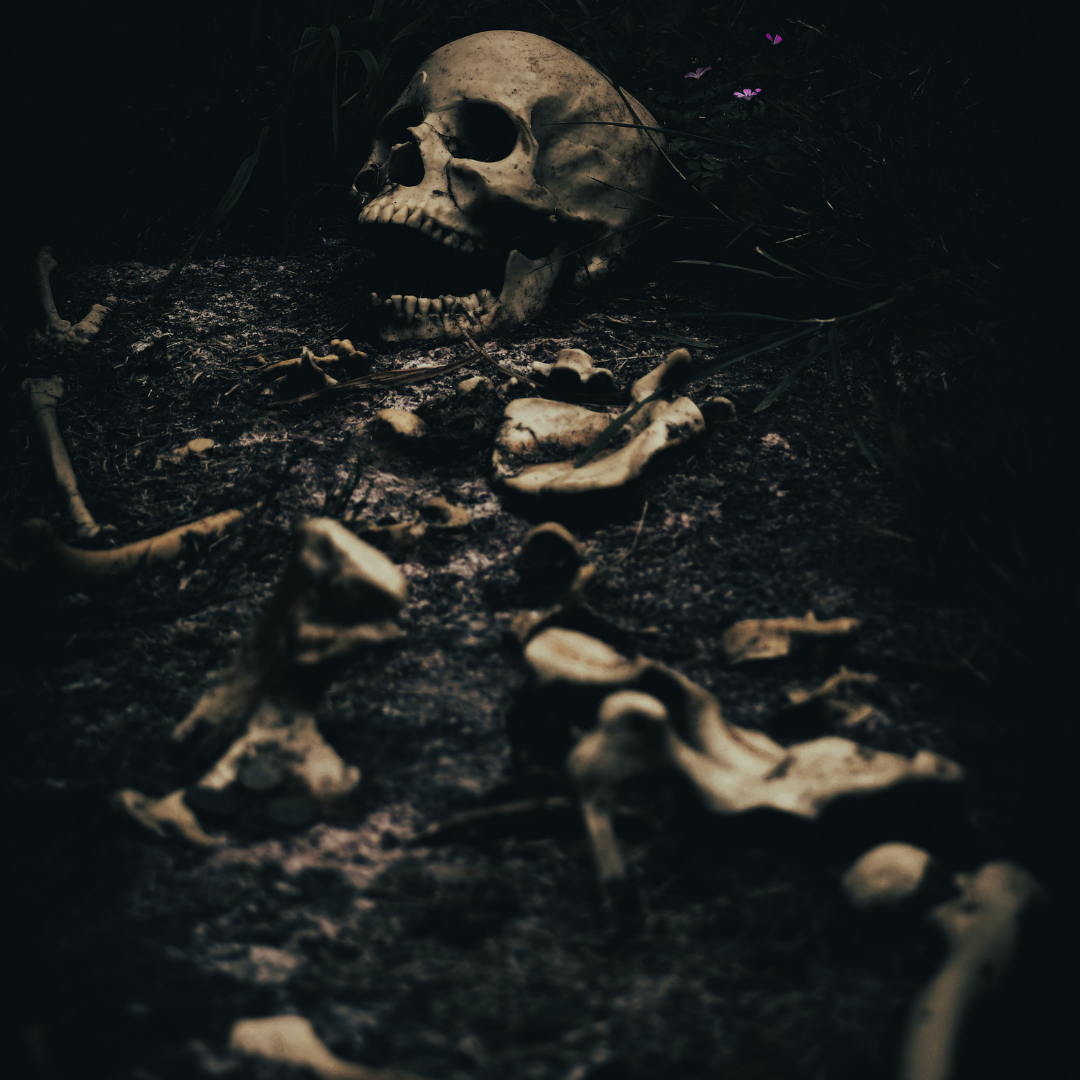
This March we’re celebrating Women’s History Month with Thilde Kold Holdt, author of the brilliant Hanged God Trilogy, who’s sharing the legendary, archaeological and historical influences behind the women in her Viking Age fantasy series.
We’ve already met Alvilde and the skeleton in Grave C 22541, but there’s no one quite like Auðr…
When talking about strong Viking Age women, many will likely think of female warriors like Lagertha, known from the TV show Vikings, Alvilde whom we heard about previously, or even Hilda from the Hanged God Trilogy, but female strength does not necessarily have to take the form of physical violence.
To me, it’s older women like Auðr who truly show the strength and influence of Viking Age women. Therefore it is the stories of women like Auðr who brought to life Siv and Tyra in the Hanged God Trilogy.
Auðr the Deep-minded was an independent woman and is recorded as one of the four most influential settlers in early Iceland. To begin with Auðr was born as the second daughter of Ketill Flat-nose, a great Chieftain in Norway. Her story as we know it began ever so timidly when Auðr married Olaf the White, the self-proclaimed Norse King of Dublin. Following her husband, Auðr moved to Ireland and birthed their son Thorstein the Red. (Yes, Vikings were really into colours.)
When Auðr’s husband died in battle, Auðr took her son to Scotland where he gained a wife of his own, had seven children and became a proper warrior. Until the tragic event that forced Auðr into the history books as the strong grandmother she was.
For when Thorstein was betrayed and slain in battle, Auðr became the head of the household and had little time to mourn the loss of her son. Stranded in the hostile British Isles which betrayed and killed her son, Auðr knew that her kin would only be safe by leaving those shores. In Norway too, feuds had risen against her father and their kinsmen, but two of her brothers were said to have settled in Iceland. Surely, they would welcome her and her family with open arms.
In secret Auðr commissioned a ship to be built deep in the forest and gathered a crew of twenty men loyal to her. When the large ship was finally sea-ready, Auðr took all of her granddaughters, as well as her widowed daughter-in-law, all of their kin and all of their thralls on a seafaring journey towards the newly discovered Iceland.
Auðr first commanded the ship safely to the Orkney Islands, where she arranged a marriage for one of her granddaughters before pushing off from shore to steer the ship the last of the way to Iceland.
By the time Auðr’s ship arrived on the Icelandic coast, winter was already beginning to set in and her large retinue were in dire need of shelter. Arriving at the house of Auðr’s elder brother, they naturally expected appropriate hospitality, but were instead turned away.
The whole family, a crew of twenty and all of their thralls, were too many people to house, her eldest brother said. He could only house half of them, but this refusal of proper hospitality offended Auðr so much that she left with the entire retinue to instead overwinter with her second brother.
As soon as spring came around, Auðr left her brother’s house to find a place on the Western coast to settle. In Iceland Auðr freed the thralls who journeyed with her from Scotland and gave them, as well as all of her crew and kinsmen, land to farm. Then they built a homestead in Hvammur, from which Auðr arranged prosperous marriages for all her granddaughters.
When Auðr became frail and realised that her time in Midgard was up, she gathered all of her kinsmen at her side and arranged a great feast. For three days and nights straight they drank and laughed and sung while Auðr gave gifts and advice to all of her kinsmen and friends. On the third night she announced that the feast needed to continue for another three nights so that it could also be her funeral feast, and then she passed away.
The high attendance of the feast became a final testament to the strength and respect this woman earned in life, but although Auðr may have passed on, her presence is still very much felt on the western coast of Iceland.
Today you will still find the remains of Auðr’s house in Hvammur, where her kinsmen lived for generations, and where the famous Icelandic historian Snorri Sturleson, who wrote the Prosa Edda, was born. Nearby her home, Auðr raised a Christian cross to pray, and thus that place too gained a name. Today it is still known as Krosshólaborg (literally: Cross-Hill-Town) and a stone cross has been raised in Auðr’s memory. Travel west from here to the cape and you will find Dagverðarnes (literally: Breakfast-Ness), named as such because when Auðr and her loyal men left her brother’s house to search for a place to build, they stopped to eat breakfast there. Travel further north and you will come across Kambsnes (literally: comb-headland) where Auðr is said to have lost her comb, once upon a time.
All throughout the landscape of Western Iceland Auðr has left her mark, and as such, the legendary tale of Auðr lives on to this day. Auðr may not have been a female warrior who roared and ran into battle, nor did she truly begin her own story until she was already a grandmother, but by Skadi, that did not hinder her from leaving behind an impressive legacy. And is that not precisely what marks a Viking of worth?
As the Alfather said:
“Cattle Die,
Kinsmen die,
We must die likewise,
I know one thing which never dies,
The reputation each gains in life.”
-Hávamál-
Slaughtered Gods, the third and final book in The Hanged God Trilogy, is out this October.
